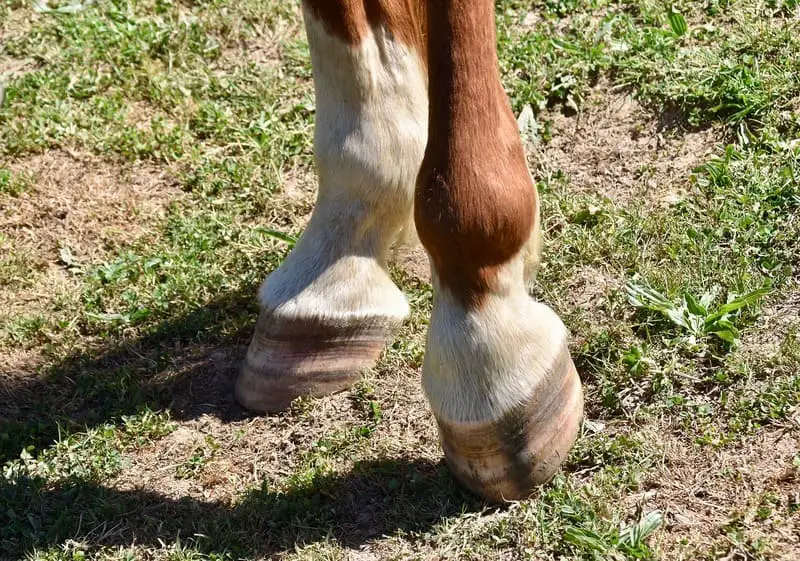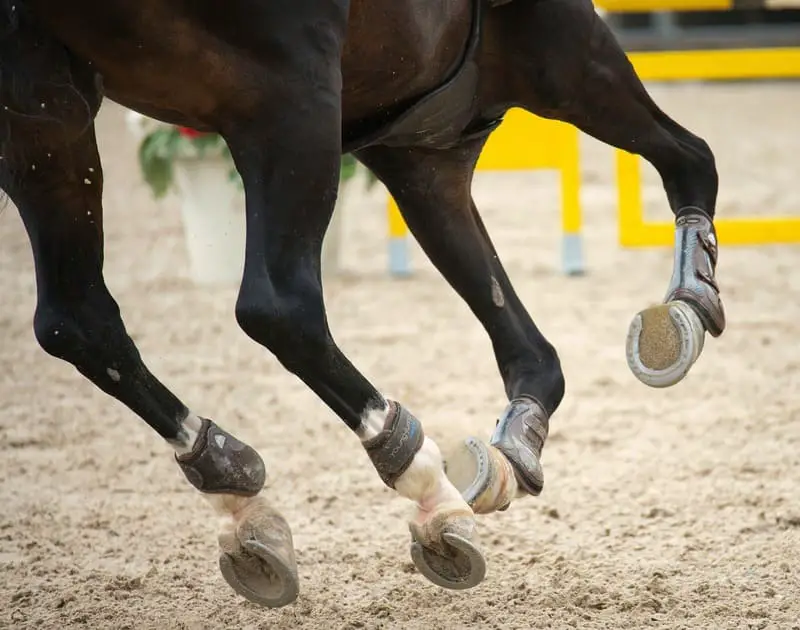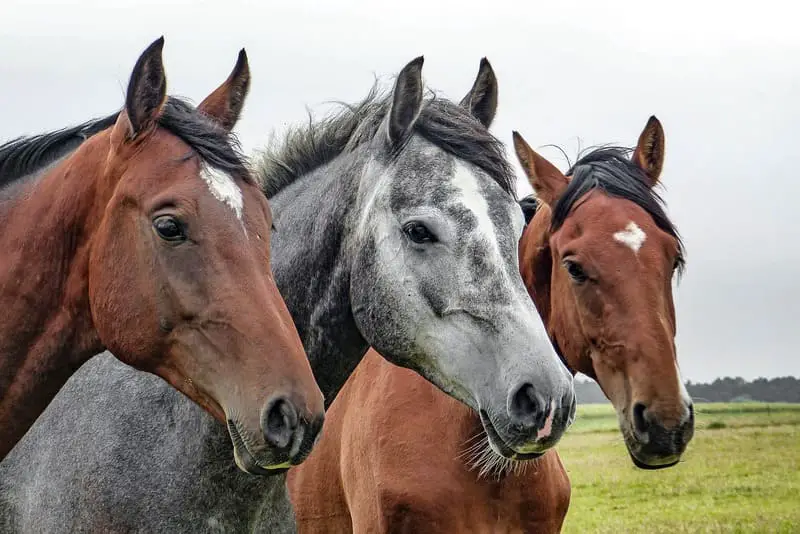Horses are remarkable animals that have been domesticated by humans for thousands of years. They have played significant roles in transportation, agriculture, and leisure activities throughout history. One of the most distinctive features of horses is their hooves. Hooves are the hard, protective coverings that surround the tips of a horse’s toes, and they serve a variety of important functions. In this comprehensive article, we will explore the multifaceted roles that hooves play in a horse’s life.

Anatomical Structure of Horse Hooves
Before delving into the various functions of horse hooves, it’s essential to understand their anatomical structure. A horse’s hoof consists of several components, each with its specific purpose:
1. The Hoof Wall
The hoof wall is the hard, outer shell of the hoof and is made up of a tough, fibrous protein called keratin. It provides protection to the sensitive structures inside the hoof, such as the bones and blood vessels.
2. The Sole
The sole is the concave, flat underside of the hoof. It helps distribute the horse’s weight and absorb shock, acting as a cushion during movement.
3. The Frog
The frog is a wedge-shaped structure in the center of the sole. It aids in traction and circulation by coming into contact with the ground when the horse walks, providing grip and stimulating blood flow.
4. The Coronary Band
The coronary band is the junction between the skin and the hoof wall. It’s the area where the hoof wall grows from and produces new hoof material.
5. The White Line
The white line is the junction between the sole, sole wall, and the hoof wall. It plays a critical role in hoof stability and integrity.
6. The Digital Cushion
The digital cushion is a fatty, fibrous structure situated deep within the hoof. It helps absorb shock and distributes the horse’s weight.
Now that we have a basic understanding of the hoof’s structure, let’s explore the various functions of horse hooves in more detail.
Weight-Bearing and Support
Horse hooves primarily serve as weight-bearing and support structures for the animal. Horses are large and heavy animals, and their hooves are designed to distribute this weight evenly and support them when they are standing, walking, or running. The hoof wall and sole are key components that help bear the horse’s weight and provide stability.
The hoof wall, being hard and sturdy, forms a protective casing around the sensitive structures inside the hoof, such as the bones and blood vessels. This not only offers support but also shields these vital parts from external damage.
The sole, on the other hand, acts as a cushion, providing shock absorption as the horse moves. This is essential to prevent injuries or discomfort, especially when a horse is walking or running on hard surfaces.

Locomotion and Movement
Horse hooves are critical for the horse’s ability to move effectively and efficiently. They play a crucial role in locomotion, allowing the horse to walk, trot, canter, gallop, and perform various maneuvers. Here’s how hooves contribute to these movements:
1. Walking
During walking, a horse’s hooves take turns hitting the ground in a diagonal pattern. This allows the horse to move smoothly and maintain balance. The frog, which comes into contact with the ground with each step, aids in traction and helps prevent slipping.
2. Trotting and Cantering
In faster gaits like trotting and cantering, hooves provide the necessary propulsion and support. The rhythmic impact of hooves on the ground enables the horse to maintain a consistent pace.
3. Galloping
Galloping is a high-speed gait where all four hooves momentarily leave the ground. Hooves play a vital role in the take-off and landing phases of the gallop, ensuring the horse’s stability and balance.
4. Maneuvering
Horses can execute various maneuvers, such as turning, stopping, and side-passing, by using their hooves to change direction and shift their weight accordingly. The digital cushion helps absorb the shock of sudden movements.
Traction and Grip
Traction and grip are essential for a horse, especially when navigating uneven terrain, such as fields, forests, or rocky landscapes. Horse hooves are designed to provide adequate traction and prevent slipping. The frog, which is soft and pliable, makes contact with the ground and helps the horse maintain grip in various conditions. This is particularly important for horses that work in agriculture, forestry, or other outdoor activities.
In addition to the frog, the hoof wall also contributes to traction. Its hard, textured surface can grip the ground, ensuring the horse’s stability on slippery or challenging surfaces.
Shock Absorption
Horses are agile animals that often engage in activities that involve running and jumping. To protect their legs and joints from the impact of landing, horse hooves play a critical role in shock absorption.
The digital cushion, located deep within the hoof, serves as a natural shock absorber. When a horse lands after a jump or while running, the digital cushion compresses, dissipating the force and reducing the impact on the horse’s bones and joints. This ability to absorb shock is essential for preventing injuries and ensuring the horse’s long-term soundness.
Circulation and Blood Flow
Good circulation is vital for a horse’s overall health, and hooves are integral to this aspect of their well-being. The coronary band, where the skin meets the hoof wall, is a key site for blood supply to the hoof.
Blood vessels within the coronary band supply oxygen and nutrients to the hoof structures, helping to maintain their health and integrity. Additionally, the frog’s contact with the ground during locomotion helps stimulate blood flow to the hoof, further promoting overall hoof health.
Thermoregulation
Horses are susceptible to a range of environmental conditions, from freezing winters to scorching summers. Hooves play a role in thermoregulation, helping the horse adapt to temperature changes.
During cold weather, a horse’s hooves may constrict blood vessels to conserve heat. This reduces the flow of blood to the extremities, including the hooves, and helps to maintain core body temperature. In contrast, during hot weather, the hooves may dilate blood vessels, allowing for increased blood flow to cool the horse’s body.
Proper hoof care is essential in both extreme cold and heat to ensure that the horse’s hooves can effectively regulate their body temperature.
Defense and Communication
Horses are social animals that often rely on non-verbal cues and body language to communicate with each other. Hooves can be used as a means of defense or communication during interactions with other horses or potential threats. Some of the ways hooves are employed in these situations include:
1. Kicking
Horses may use their hind hooves to kick out at potential threats or to establish dominance within a herd. Kicking can be a powerful defensive and communicative tool.
2. Pawing
Pawing is a behavior where a horse repeatedly strikes the ground with one of its hooves. This can be a sign of frustration, impatience, or discomfort, and it is often used to get the attention of humans or other horses.
3. Striking
Striking involves using the front hooves to strike out at a perceived threat. It is an aggressive behavior and can be used for defense or to establish dominance.
4. Scratching
Horses may use their hooves to scratch an itch, particularly in areas that are challenging to reach with their mouths or teeth. This is a self-comforting behavior and is not intended as a form of communication with others.
Understanding these hoof-related behaviors is crucial for anyone working with horses, as it allows for safer and more effective handling.
Natural Wear and Self-Maintenance
Horse hooves have a unique ability to self-maintain to some extent. In their natural environment, wild horses typically traverse various terrains, which naturally wears down their hooves and keeps them at an optimal length. This self-maintenance is less pronounced in domesticated horses, as they often live in more controlled environments with regular hoof care provided by humans.
To promote healthy hooves, domesticated horses require periodic trimming and maintenance. Farriers or equine veterinarians typically perform these tasks, ensuring that the hooves are balanced, properly shaped, and free from any irregularities or diseases.
Hooves in Different Activities
The functions of horse hooves can vary depending on the horse’s activities and lifestyle. Different disciplines and activities require specific hoof qualities and characteristics. Here are some examples:
1. Racing
Racehorses, known for their incredible speed, need lightweight yet durable hooves to maintain their agility. Hooves play a crucial role in absorbing the impact during high-speed racing and providing the necessary traction on the track.
2. Jumping
Jumpers, whether in show jumping, eventing, or other equestrian sports, rely on their hooves to take off and land safely. Hooves with good shock-absorbing capabilities are essential to minimize the risk of injuries during jumps.
3. Dressage
Dressage is all about precise and controlled movements. In this discipline, hooves should provide stability and grip for executing intricate maneuvers with finesse.
4. Ranch Work
Horses used for ranch work, such as herding cattle, require sturdy hooves with excellent traction. These hooves should be able to withstand the rigors of rough terrain and offer the horse stability when making sharp turns or sudden stops.
5. Pleasure Riding
Horses used for leisurely trail rides or as family pets also benefit from hooves that can provide comfortable and stable footing. Hooves with good shock-absorption capabilities help prevent lameness and other hoof-related issues in horses used for these activities.

Common Hoof Problems and Maintenance
While horse hooves are incredibly resilient and adaptive, they are not immune to problems. There are various hoof-related issues that can affect horses, and it’s essential for horse owners and caregivers to be aware of these problems and the necessary maintenance practices. Some common hoof problems include:
1. Laminitis
Laminitis is a painful and potentially crippling condition that affects the tissues connecting the hoof wall to the underlying structures. It can result from various factors, including dietary issues and systemic illnesses.
2. Thrush
Thrush is a bacterial infection that occurs in the frog of the hoof. It can lead to foul-smelling discharge and lameness if left untreated.
3. White Line Disease
White Line Disease is a fungal or bacterial infection that affects the white line of the hoof. It can cause the separation of the hoof wall from the underlying structures.
4. Hoof Cracks
Hoof cracks can develop from a variety of causes, such as improper trimming, moisture imbalance, or injury. These cracks can compromise the structural integrity of the hoof and lead to lameness.
5. Navicular Syndrome
Navicular syndrome is a common cause of lameness in horses. It affects the navicular bone and surrounding structures in the foot, resulting in pain and discomfort.
6. Hoof Abscesses
Hoof abscesses are localized infections that can be extremely painful for horses. They often cause sudden lameness and may require veterinary intervention.
To prevent and address these issues, regular hoof maintenance is essential. This includes:
1. Regular Trimming
Hooves should be trimmed on a schedule appropriate for each horse’s specific needs. Trimming helps maintain proper balance and prevents excessive growth, which can lead to various problems.
2. Correct Shoeing
Horses involved in specific activities or with certain hoof issues may require shoes. Proper shoeing ensures that the hooves are adequately protected and supported.
3. Cleanliness
Proper hoof hygiene is essential to prevent issues like thrush. Regular cleaning and inspection of the hooves can help detect and address problems in their early stages.
4. Diet and Nutrition
A well-balanced diet is crucial for hoof health. Ensuring that a horse receives the right nutrients, including biotin and other vitamins and minerals, can promote strong and healthy hooves.
5. Environmental Management
Controlling the horse’s environment can help prevent issues related to moisture and fungal infections. Providing dry, clean living conditions is essential.
Regular consultations with a qualified farrier or equine veterinarian are crucial to maintaining healthy hooves. They can assess the horse’s specific needs and provide guidance on proper care.
Conclusion
Horse hooves are remarkable structures that play a multifaceted role in a horse’s life. From weight-bearing and locomotion to shock absorption, traction, and communication, the functions of hooves are diverse and vital. Understanding the anatomical structure of horse hooves and their various roles is crucial for horse owners, trainers, and caregivers to ensure the well-being and performance of these majestic animals.
Proper hoof care and maintenance are essential to prevent and address common hoof problems, ensuring that horses can lead healthy, active lives. By respecting and caring for the incredible capabilities of horse hooves, we can continue to enjoy the companionship and utility of these magnificent creatures for generations to come.
